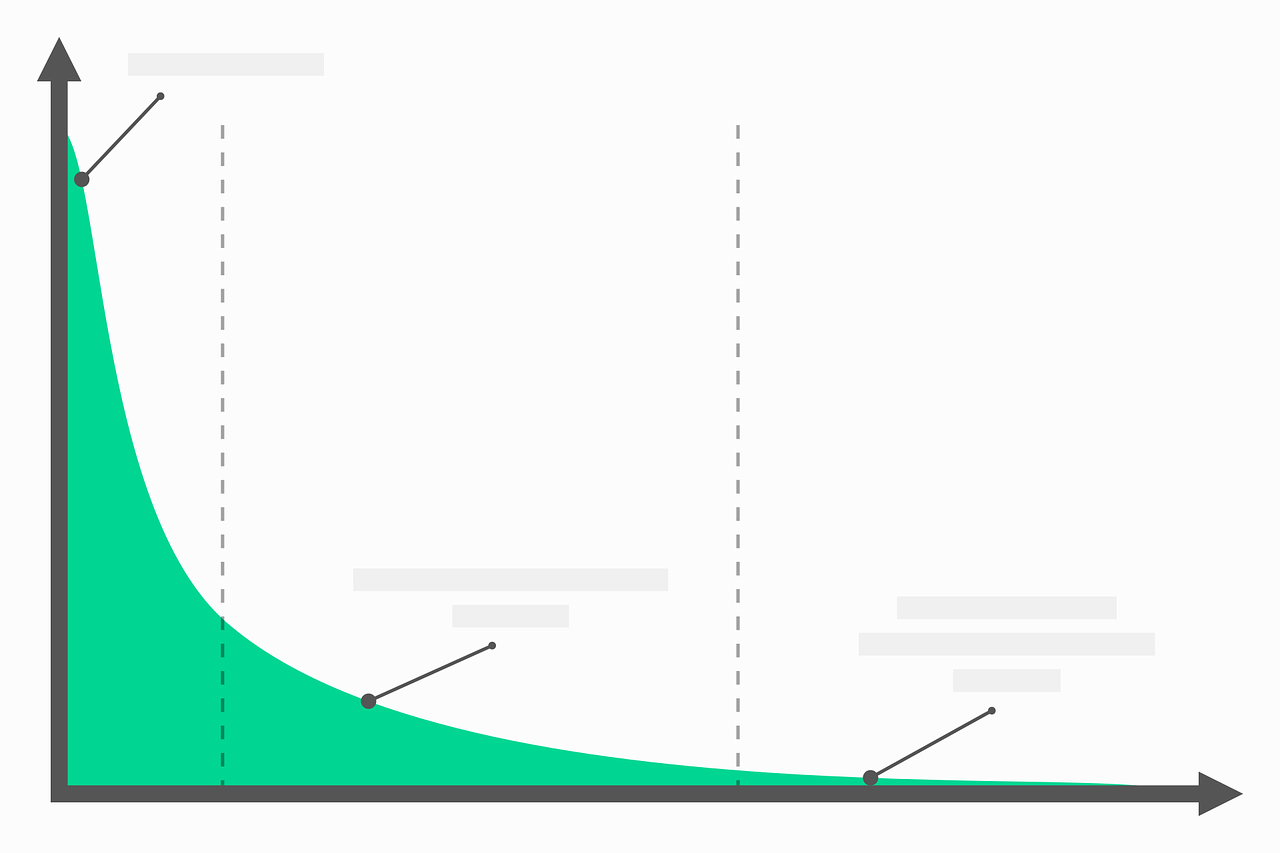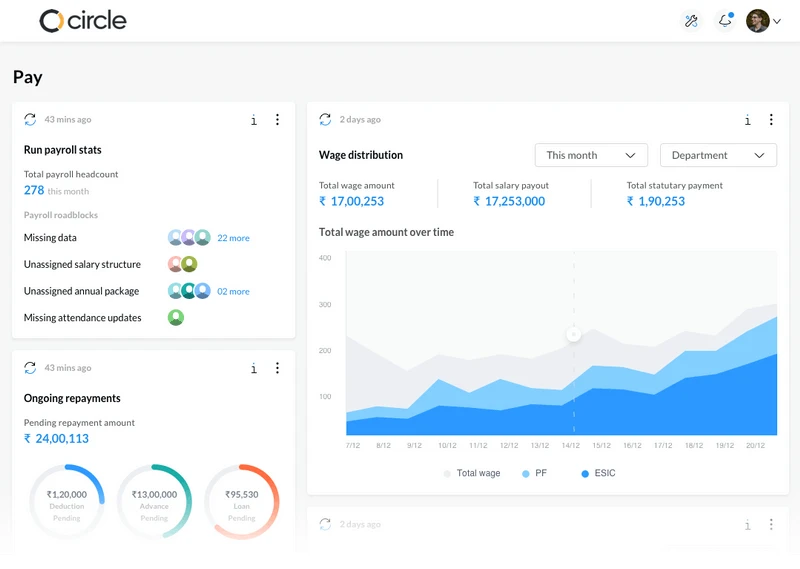Navigating the intricate tax system may be challenging for companies operating in India. The primary challenge for any company is that they must agree to obey Indian income tax laws, including individual income taxes (IIT) for employees in India, social security fees, VAT, withholding tax, business tax, and permanent establishment issues.
The employer deducts payroll taxes from an employee’s salary with the help of Human Resource Management. Payroll income taxes are frequently deducted from an employee’s compensation as a modest percentage. These taxes are used for several purposes, including social security and employee health insurance. Employers withhold the money and then transmit taxes to the appropriate government authorities.
Types of Payroll Taxes in India
Every employee must pay TDS, or income tax is the primary professional tax. In addition, companies and Human Resource Management must comply with several deductions and rules. We have covered all the information you might require.
1. Income Tax
Payroll taxes must be paid in India by every individual with a source of income, including Hindu Undivided Families, individuals, businesses, and other entities. Additionally, professional taxes owed on capital gains, business profits, and income from other sources, such as gambling, dividends, etc., must be paid by every salaried employee in India.
Every person may have a different tax slab depending on the new and old tax regimes. TDS is often withheld at the source based on the tax bracket. Employees can receive a portion of this payroll tax by filing ITR reports based on their exemptions and deductions.
2. Social Securities
There are several payroll schemes in India, including health insurance, pension plans, gratuities, etc. Social security is also a part of these schemes. A payroll-based pension contribution is known as the Employees’ Provident Fund (EPF) Scheme. The employer and the employee contribute to the EPF based on their incomes.
National Health Services are also included in the Indian payroll. These programmes do not provide employees with free medical attention or health insurance premiums. It provides money for maternity, illness, and other expenses.
According to compliance regulations, females are required to take 12 weeks of maternity leave before and after the birth of the kid.
When salaried employees have worked for one firm for more than five years in India, the gratuity is subtracted from payroll taxes. Employees receive 15 days of additional pay each year they work for the same employer.
3. Employer and Employee Contributions
Both the employee and the employer make various contributions to payroll in India. Employers with 20 or more workers must make Employee Provident Fund and Employee Pension Scheme contributions. Any firm with ten or more workers is required to pay into the Employee State insurance. The employee and the employer make the above deductions or payments at differing rates. Here are the specifics of employer payroll taxes:
- No taxes on income earned between INR 0.0 and INR 2.5 lakhs: this slab comes under tax exemption.
- If income is between INR 2.5 lakhs and INR 5 lakhs: a 5% tax is applicable.
- If income exceeds INR 5 lakhs but is less than INR 10 lakhs: 20% tax is applicable.
- If income exceeds INR 10 lakhs: 30% tax is applicable.
4. Minimum Wage
A minimum wage statute in India, i.e., the Minimum Wages Act 1948, governs wage-related laws and regulations. Every job function has a minimum payment prescribed under the act based on employment and other categories. Employers must refer to the rule regarding the different types of employment.
5. Working Hours and Leave
According to payroll regulations, the typical working day for each employee in India is nine hours or 48 hours per week. Any hour worked above this is considered overtime and paid at double the standard pay rate in some companies. 15 paid leaves are provided to one employee in a single year. As a result of national holidays, there are several additional leaves. Over this, paid leaves might be taken.
Income Tax Slab According to Employee Salary
In India, a new tax system/regime known as 115BAC has come into effect. It is optional for the taxpayer to pay taxes according to the new or old regime. Taxpayers may have already made one of the two choices when submitting their ITR returns. Although the system lowers taxes, some employee exemptions are not available. Below are the tax slabs as per section 115 BAC:
No taxes on income earned between INR 0.0 and INR 2.5 lakhs per year: this slab comes under basic tax exemption.
- If annual income exceeds INR 2.5 lakhs and below INR 5 lakhs: a 5% tax is applicable.
- If annual income exceeds INR 5 lakhs and below INR 7.5 lakhs: a 10% tax is applicable.
- If income is between INR 7.5 lakhs and INR 10 lakhs: 15% tax is applicable.
- If income is between INR 10 lakhs and INR 12.50 lakhs: 20% tax is applicable.
- If income is between INR 12.5 lakhs and INR 15 lakhs: 25% tax is applicable.
- If income exceeds 15 lakhs: a 30% tax is applicable.
We must bear in mind a few points about the new tax system:
- Individuals up to 60 years old, 60 to 80 years old (senior citizen), and above 80 years old (super senior citizen) all fall under the same tax brackets.
- According to section 87A, a rebate of INR 12,500 is available to anyone with an income of less than or equal to INR 5 lakhs.
- There will be no tax due.
- INR 2.5 lakh is the fundamental exemption threshold for NRIs.
Requirements for Adopting the New Tax System
Any taxpayer may utilise the new system, although they may have to give up several deductions previously permitted under the old system. Here are a few significant deductions that have been eliminated from the current system out of the roughly 70 that were included:
- Allowance for housing rent
- Allowance on leave travel
- Allowance for conveyance
- Allowance for assistance
- Allowance for relocation
- Allowance for children’s education
- Standard deduction of salary u/s 24
- Interest on a housing loan
- Professional tax
Which Tax Regime Is Better?
Many taxpayers benefit from the new system. However, it is thought that this tax regime may be most advantageous to taxpayers earning under INR 15 lakh yearly. Naturally, heavy taxpayers would gain more under the previous system. If you meet the following requirements, you should think about switching to the new tax system:
- You have a limited investment portfolio.
- You refuse to opt for income tax deductions.
The previous system, however, can be advantageous if you have a favourable income tax deduction plan in place, such as insurance, Mediclaim, etc. With wise investments and deductions, the previous tax system may help you lower your tax obligation.
As a result, choose an income tax returns regime that lowers your tax burden after thoroughly studying and understanding the requirements and advantages. Before submitting the return or choosing a regime, it can be prudent to determine the tax payable under both regimes.
Why Are Payroll Taxes Important in India?
One of the most common questions raised by employees is why tax payments are required from employees and how these income tax rates are vital. To understand the importance few instances are mentioned below:
1. Penalties
To avoid fines, payroll taxes in India should be paid on time in the first place. For employees, there are a variety of professional taxes that may or may not be taken out under TDS at the source. Every earning person in India is required to pay professional taxes. Your tax bracket or tax responsibilities determine this.
According to the laws and regulations, you will have to pay the penalty if you don’t pay the tax in full. Fines for failing to pay taxes can go into the thousands. Additionally, this affects your potential employment, credit score, and reputation with employers and other organisations.
2. Responsibility
The employees are ultimately responsible for paying taxes. You must comprehend your taxes as a responsible citizen of the nation and ensure they are paid on time.
Payroll taxes are withheld by the company’s accounting or human resources department based on your declarations and investments. To prevent fines and related trouble, you must pay your professional taxes on time as a responsible citizen.
3. Economy
Last but not least, India’s economy depends on payroll taxes. With the help of these taxes, every nation grows and prospers. This funding supports the development of various industries and improving public areas.
Wrapping Up
The prosperity of every nation depends on its citizens making tax contributions on their income levels. The country’s industries and technological advancements benefit from this money. Overall, payroll taxes in India support a growing economy. It boosts the economy.
sumHR is a cutting-edge, incredibly simple-to-use HR management software that assists startups and SMEs in streamlining their HR & payroll procedures. With our cloud-based human resource management solutions, we have catered to businesses of different sizes. Our features include payroll automation, attendance and leave management, performance management, reimbursement management, enterprise social networking, and human resource analytics.
What is the Payroll System in India?
Human resource departments all over the world juggle a multitude of HR tasks and responsibilities. From hunting the best talents across lengths and breadths to hiring and onboarding them, engaging them, and finally preparing their payrolls at the end of each month for years, their hands are always full of several HR roles and responsibilities.
Running payrolls at the end of each month can be an overwhelming affair. This is because one has to take care of CTC, Basic Wage, House Rent Allowance, Travel Allowance, Dearness Allowance, Employee Provident Fund, Income Tax, Labour Laws, and so on for each employee in the organisation. Now, imagine repeating the entire process for 300-500 employees in various roles and designations every month yearly. It sounds exhausting, right?
If the process doesn’t already seem tricky and elaborate enough, imagine it in an Indian context where the HR departments must also consider various state and national labour regulations and statutory requirements and abide by the same. Moreover, there can never be room for even a single error unless you wish to incur the wrath of employees, management, government bodies, or all at once. Therefore, some companies have specialised payroll sub-departments within their HR department or outsource the entire process to a third party to overcome any hassle.
This article tries to look into the nuances of Payroll and Statutory Compliance in the Indian context along with social security as to what they are, what an efficient process looks like, and what can be the best practices that can be followed while managing payrolls of employees in India.
Gross Income or salary is nothing but the total Cost-To-Company (CTC), barring deductions.
Gross Deduction is all regular or statutory deductions like PF, ESIC, IT, etc.
Constituents of Salary Structure in India
Let us elaborate upon the various components that constitute an important part of the salary structure of an Indian employee.
CTC: Cost-to-Company or CTC refers to the total amount a company spends on its employee. It is significantly higher than the employee receives, primarily because it is the total amount, including all the deductions such as PF, ESIC, IT, Gratuity, etc.
CTC = Gross Salary + Gratuity + PF + Prerequisites
Gross Salary: It is a total obtained by adding an employee’s basic salary plus allowances (before tax) and other deductions. It also includes overtime pay, joining/ quarterly/half-yearly/annual bonuses, holiday pay, etc.
Gross Salary = Basic Salary + HRA + Other Allowances
Net/Take-Home Salary: It is the amount calculated after deducting income tax at source (TDS) and other deductions per the company policy.
Net Salary = Gross Salary – Professional Tax – Public Provident Fund – Income Tax
Allowances: These refer to mandatory benefits provided to the employee as part of the organisation’s compliance with Indian laws. It may include House Rent Allowance (HRA), which depends on the work location’s nature, Medical Allowance, Leave Travel Allowance, Dearness Allowance, and so on.
Prerequisites: These comprise the non-cash benefits the company pays its employees at higher designations. For example, the use of company cars for work, rent-free accommodation or a personal accident policy. It forms a part of an employee’s salary, and they also pay taxes on them.
Deductions
In the context of Indian payroll, statutory deductions apply to the net CTC of an employee. These are compulsorily mandated by government laws and need to be adhered to. An employee gets a net take-home salary after necessary deductions are made from their current CTC.
These deductions majorly include:
Provident Fund (PF): A government-mandated deduction under the Employees Provident Fund & Miscellaneous Provisions Act, 1952, wherein a fixed amount is deducted from the employee’s monthly salary. This amount is added to their PF account and an equal contribution from the employer. It applies to all companies with a strength of 20 or more.
Employee State Insurance (ESI): It applies to employees whose gross salary is below INR 21,000 per month. It is the amount paid fully to an employee during medical leave, depending on the job profile and company policy.
Professional Tax: It is imposed on salaried employees and professionals.
The Payroll Cycle
In general, the payroll cycle comprises three stages for any organisation:
Pre-Payroll Activities: These consist of management-approved policies such as attendance policies, pay policies, leave policies, leave without pay policies, and so on. The employees must be aware of them firsthand. Salary structure data of each employee from respective departments are collected along with their eligible bonuses, allowances, and benefits.
Actual Payroll Process: After the pre-payroll activity is over, the payroll process is run before the month’s end. The data collected in the pre-payroll stage is validated against records in the HR department. Usually, the payroll software calculates the salaries after the appropriate data is fed into them.
Post-Payroll Activities: After all the calculations are done, and all the deductions such as PF, ESIC, and Professional Tax are made, the employees get their salaries credited by month end. It also includes the disbursal of payslips and preparing reports for upper management.
What are Statutory Compliance Requirements in India?
After covering the payroll system in India in-depth, we’ll now look at the statutory payroll rules created by state and national government bodies. Statutory compliances cover all the mandatory labour and taxation laws of the state or the central government. Businesses must completely comply with them to avoid fines or penalties. This usually comes under the combined ambit of the companies’ human resource management and legal departments.Major Statutory Laws in India are:
The Minimum Wages Act, 1948: A minimum wage is that below which a company cannot offer to its employees for the same work and at the same level. The state and national governments have established minimum wage rates for all occupations, sectors, or regions.
The Payment of Bonus Act, 1965: It defines the minimum and maximum cap on the annual bonus paid to the employees in specific organisations, subject to a minimum strength of 20 employees. The bonus payment calculations consider employee salary and the profits made by the establishments in a given financial year. Further, disqualifications under the Act are also defined.
Employees Provident Fund & Miscellaneous Provisions Act, 1952: Under this Act, an employer is responsible for creating a PF account for a newly joined employee with the government. Both the employee and the employer contribute equally to the fund monthly.
Employees State Insurance Act, 1948: The Act ensures that the employees are protected from any financial distress which may arise out of an employee’s sickness, disablement, or in worst cases, death during discharge of services on behalf of the employer.
The Maternity Benefits Act, 2017: Under this Act, every employed woman is entitled to a paid maternity benefit leave of up to 26 weeks for the first two children. It ensures the well-being of an employed, pregnant woman in an organisation with medical benefits.
The Payment of Gratuity Act, 1972: The Act aims to provide employees with a one-time gratuity at their retirement, provided the employee has remained in the organisation for a minimum of 5 years.
Summing Up
In summary, the payroll and statutory compliance systems are very elaborate and exhaustive for Indian companies. The entire exercise can be a huge energy drainer and easily take a toll on those closely related to the functioning of the process. Despite all odds, all organisations’ human resource management departments carry out the process monthly, without breaking a sweat, to ensure the correct and timely disbursal of an employee’s salary.
Frequently Asked Questions
1. What is statutory compliance in HR?
The legal framework that the HRs of an organisation must comply with to deal with its employees is known as statutory compliance in HR. The HR department must ensure that the employee policies adhere to statutory compliance and that employees are taken care of accordingly.
2. What is India's Payroll Compliance?
The policies developed by Indian authorities or the legal framework the companies must adhere to while providing salaries and generating payrolls in India come under India’s payroll compliance.
3. What do you mean by HR Compliance?
The process of aligning the HR policies of an organisation with the labour laws of the country and the world is called HR compliance.
4. Which elements does the Indian salary structure constitute?
The salary structure in India comprises CTC, Gross Salary, Net Salary, Allowances, and Prerequisites.
sumHR is the HR software in India that provides all services related to your human resource management needs under one roof. We provide unmatched HRMS, payroll, expense management, and talent acquisition services.








